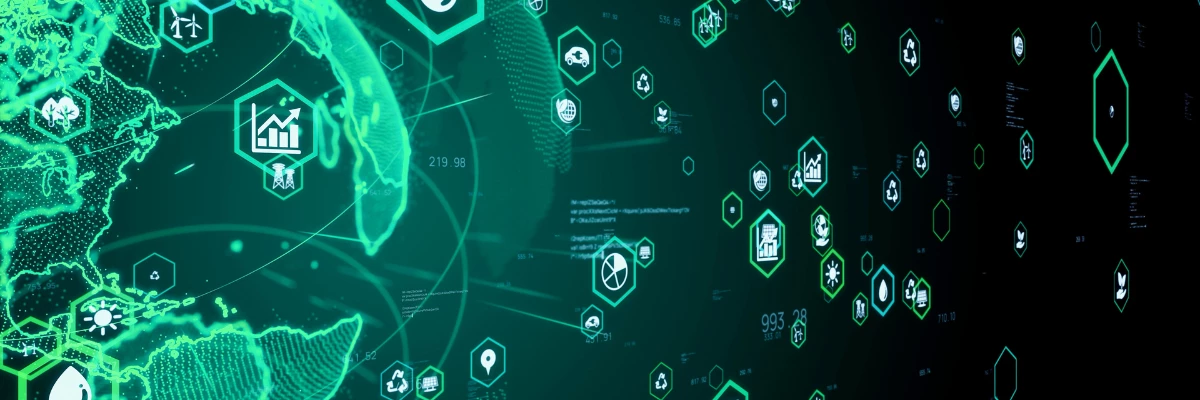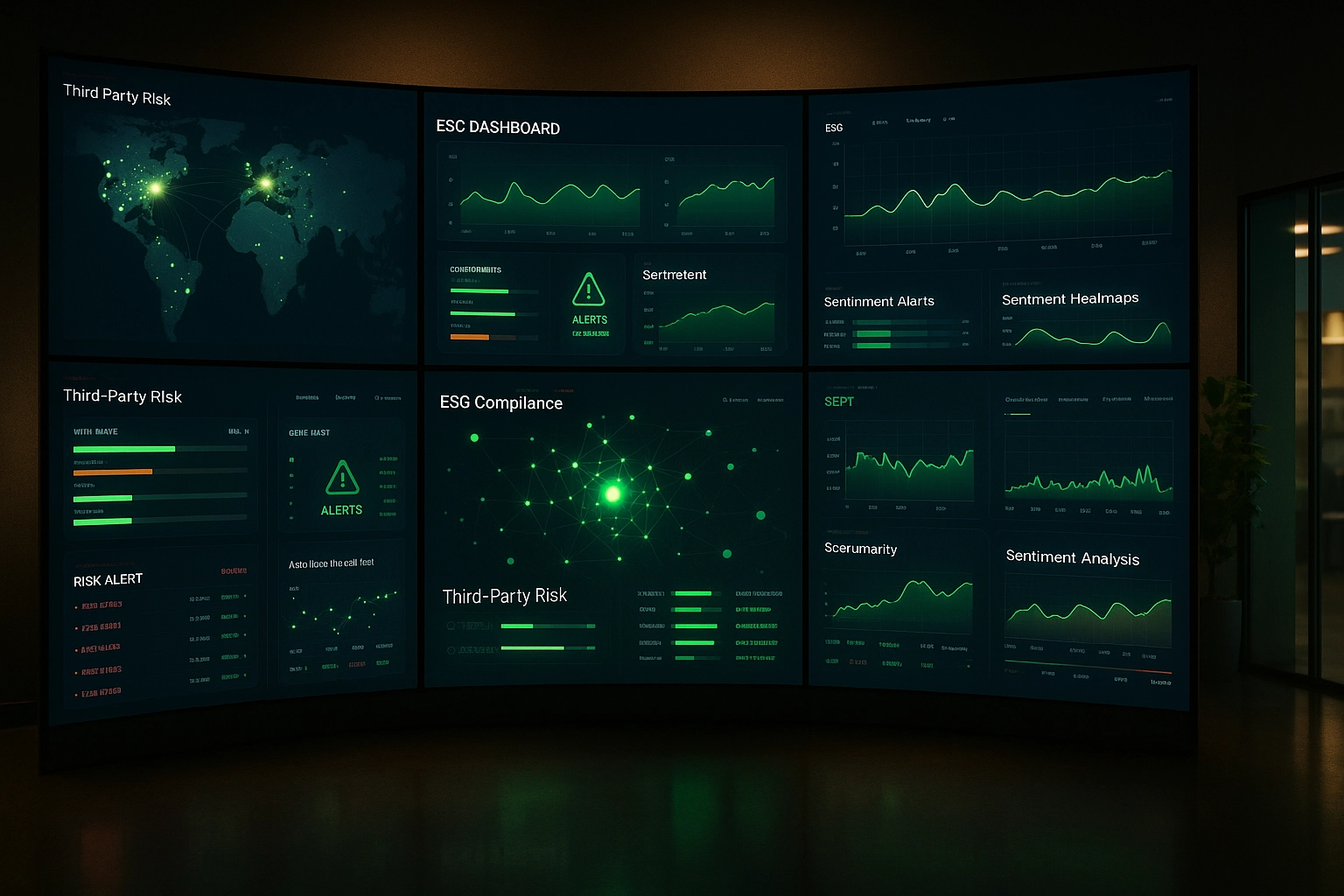Comprehensive Methodology for Third-Party Risk Mapping

In today’s business environment, where relationships with external partners are strategic, third-party governance has become an essential priority. Third-party risk mapping is a critical tool for identifying, structuring, and prioritizingfactors that may impact the organization. According to a recent Gartner study, over 60% of organizations have now implemented a centralized or federated model for managing third-party risks, highlighting the evolution from TPRM (Third-Party Risk Management) to TPGRC (Third-Party Governance & Risk Control).
Foundations of Third-Party Risk Mapping
The first step in implementing effective risk mapping is understanding its foundations. This requires a deep comprehension of third-party governance, which mainly concerns the issues associated with business relationships with external partners. These issues can impact various aspects of the organization, including finance, reputation, and, most importantly, operational resilience.
The primary goal is to ensure that supplier practices comply with regulatory requirements and established standards. As ANSSI notes in its recommendations on digital security, an organization’s ability to properly assess these elements determines its collective resilience against external threats.
This approach aligns with the sector’s strategic shift from TPRM to TPGRC. This transition represents a significant paradigm shift: while TPRM focused primarily on identifying and mitigating risks, TPGRC adopts a more holistic vision that incorporates collaborative governance, continuous control, and shared value creation. Industry analyses show that this evolution allows organizations to move from a defensive, reactive posture to a proactive approach that strengthens partnerships while improving regulatory compliance.
The Importance of Third-Party Integrity
Third-party integrity lies at the heart of any risk mapping methodology. It is crucial to verify not only legal compliancebut also the ethics and governance of potential partners. Beyond potential financial sanctions, failures can have serious reputational repercussions.
In the construction sector, for example, supplier certification has become a critical prerequisite. According to a Financier Worldwide study, “assessing the reliability and credibility of a third party enables companies to meet compliance obligations and internal risk management requirements.” Collaborative assessment helps shed light on potential blind spots and prevent unsuitable engagements, while reducing “supplier fatigue” through a shared approach.
Key Steps in Developing a Third-Party Risk Matrix
Creating effective risk mapping involves several structured steps. According to a BlueVoyant study, organizations that methodically follow these phases ensure a comprehensive risk analysis of external partners while reducing third-party evaluation time by 40%.
Risk Identification
The first crucial step is collaborative partner evaluation. This requires a thorough analysis of each third party’s activities, examining their nature, scope, and duration.
A good practice is to compile a comprehensive list of interactions with external organizations. In the public sector, for example, local authorities use detailed diagrams to map relationships with public procurement contractors, enabling the creation of standardized processes for managing partner relationships across the organization.
Risk Assessment
Once risks are identified, the next step is their evaluation. Implementing a third-party governance map allows various points of concern to be ranked according to likelihood and potential impact. According to AFNOR, this approach helps categorize risks based on severity, enabling better prioritization of corrective actions.
This assessment includes recognition of digital resilience issues, now essential given the ongoing digitization of business models. In the industrial sector, ICPE (Installations Classified for Environmental Protection) sites apply specific methodologies to assess third-party regulatory compliance, integrating REACH requirements into evaluation criteria.
Go Further
Discover how to effectively assess supplier cybersecurity using essential criteria and ISO expertise.
Risk Management Oversight
Third-party governance oversight ensures that all interventions align with the organization’s overarching goal of strengthening operational resilience. According to an UpGuard study, this requires proactively monitoring relationships with third parties so that any changes are quickly identified and addressed.
Setting specific key performance indicators (KPIs) for third-party governance is an essential component of this oversight. Metrics such as the compliance rate of critical partners, average remediation time, and percentage of third-party ecosystem coverage objectively measure process effectiveness and guide strategy adjustments.
In the distribution sector, international e-commerce players implement real-time monitoring systems for their logistics partners, using customized smart workflows to detect anomalies. This collaborative remediation is essential to maintain value chain continuity in increasingly complex business environments.
Ready to transform your third-party governance approach?
Discover how Aprovall360 can help you simplify third-party evaluations throughout their lifecycle.
Benefits of Risk Mapping for Businesses
Implementing well-structured third-party risk mapping provides numerous strategic advantages for organizations seeking to secure their market positions while maintaining regulatory compliance. According to a Thomson Reuters study, organizations with a clear third-party governance methodology can significantly reduce compliance costs while improving operational resilience.
Securing Value Chains
Through collaborative third-party governance, companies can significantly strengthen their value chains, leading to greater certainty in the continuous delivery of critical products or services. As the World Economic Forum notes, “organizations that adopt a proactive approach to third-party risk management are 45% more likely to maintain operational continuity during major disruptions.”
In the industrial sector, particularly for ICPE sites, implementing third-party risk mapping has significantly reduced incidents related to supplier non-compliance. A shared “pay-to-collect” model facilitates information sharing among stakeholders, increasing inter-company cooperation and optimizing the availability of shared resources.
Optimizing Regulatory Compliance
Integrating third-party governance measures from the outset significantly improves regulatory compliance. A systematic documentation approach provides strong evidence for internal and external evaluators, reassuring investors and partners alike.
In the public sector, local authorities that have implemented automated GDPR reporting systems for their third-party partners have reduced audit preparation time by 60%.
Specialized modules for regulations such as CSRD and NIS 2 have drastically simplified what was once a tedious documentation process. Now automated, these tools ensure reliability and efficiency in daily use while strengthening the organization’s operational resilience.
Potential Challenges in Implementation
Despite clear benefits, implementing a robust third-party risk mapping system presents several improvement opportunities that deserve close attention. According to a Gartner study, over 80% of organizations have experienced business interruptions caused by third parties in the past two years, despite investments in managing external partner risks.
Complexity of Regulatory Environments
One major improvement opportunity is the growing diversity and complexity of regulatory environments. As the IBM Institute for Business Value highlights, “institutions that implement risk-based practices to perform adequate due diligence on these third parties and continuously monitor, assess, and control these relationship risks are better positioned with regulators.”
In the construction sector, compliance with international site regulations presents a major challenge. Companies must navigate different local standards while maintaining global consistency in their third-party governance approach. Adopting proactive regulatory intelligence, rather than simple legal monitoring, enables anticipation of regulatory changes and rapid adaptation of evaluation processes.
Risk Awareness and Training
A critical aspect is the proper training of staff involved in supplier and vendor governance. According to Verizon, human error is the main attack vector in 82% of cybersecurity incidents. Developing a culture of operational resilienceis therefore essential for any organization aiming to manage third-party relationships effectively.
In the distribution sector, particularly for international e-commerce players, training teams on the regulatory specifics of different markets is crucial. As ResilientX recommends, “understanding local business practices and established thresholds for gifts and hospitality, which differ from region to region, is essential when designing your third-party training program.”
Integrating a community of certified experts into the training process ensures the adoption of uniform excellence standards across the organization and its partners, thereby enhancing consistency and effectiveness.
Take Action with Aprovall
Join more than 430,000 third parties already assessed worldwide and turn your evaluation processes into a true performance driver.
Towards Collaborative and Resilient Third-Party Governance
Implementing an effective third-party risk mapping is a cornerstone of modern third-party governance. As we have explored, this structured approach not only enables organizations to identify and systematically assess risks, but also significantly strengthens their operational resilience in the face of increasingly complex business environments.
The evolution from TPRM to TPGRC reflects the growing maturity of third-party risk management practices, shifting from simple reactive management to a truly collaborative and proactive strategy. Organizations adopting this approach benefit from enhanced supply chain security, improved regulatory compliance, and a greater ability to navigate complex regulatory environments.
With an installed base of over 430,000 third parties worldwide and deep sector expertise, Aprovall offers an integrated platform that greatly simplifies this process. Through solutions such as the mutualized and free “pay-to-collect” model for third parties, and document AI for automated anomaly detection, organizations can transform their supplier and vendor evaluation processes into a true lever for performance and collective resilience.
These articles might interest you
-
 14 September 2024Aprovall supports you in your new due diligence obligations arising from the European CS3D Directive.SolutionsThe Corporate Sustainability Due Diligence Directive, known as “CS3D”, was definitively adopted on Wednesday, April 24, 2024, by the European Parliament. The directive now needs to be officially approved by the Council and signed before being published in the EU Official Journal. It will enter into force 20 days later. Member States will then have […]
14 September 2024Aprovall supports you in your new due diligence obligations arising from the European CS3D Directive.SolutionsThe Corporate Sustainability Due Diligence Directive, known as “CS3D”, was definitively adopted on Wednesday, April 24, 2024, by the European Parliament. The directive now needs to be officially approved by the Council and signed before being published in the EU Official Journal. It will enter into force 20 days later. Member States will then have […]Read more
-
 08 July 2025Why integrate media monitoring into your third-party evaluation?SolutionsWith the rapid acceleration of digital information and the proliferation of media sources, real-time monitoring of your third-party partners’ media presence has become a critical strategic issue. Media monitoring is now an essential part of collaborative evaluation processes for any analyst seeking a comprehensive view of third-party risk. Whether the information is positive or negative, […]
08 July 2025Why integrate media monitoring into your third-party evaluation?SolutionsWith the rapid acceleration of digital information and the proliferation of media sources, real-time monitoring of your third-party partners’ media presence has become a critical strategic issue. Media monitoring is now an essential part of collaborative evaluation processes for any analyst seeking a comprehensive view of third-party risk. Whether the information is positive or negative, […]Read more
-
 03 March 2025Understanding Dynamic Risk Scoring: Fundamentals and Implementation for Third-Party GovernanceSolutionsDynamic risk scoring has become an essential tool for organizations seeking to optimize their third-party governancestrategies. With increasingly complex partnerships and growing regulatory requirements in Europe—particularly DORA and NIS 2—it is crucial to understand how this methodology transforms collaborative assessment of third-party partners. According to data reported by Sprinto, 58% of compliance teams identify assessing third-party responsiveness as their main challenge […]
03 March 2025Understanding Dynamic Risk Scoring: Fundamentals and Implementation for Third-Party GovernanceSolutionsDynamic risk scoring has become an essential tool for organizations seeking to optimize their third-party governancestrategies. With increasingly complex partnerships and growing regulatory requirements in Europe—particularly DORA and NIS 2—it is crucial to understand how this methodology transforms collaborative assessment of third-party partners. According to data reported by Sprinto, 58% of compliance teams identify assessing third-party responsiveness as their main challenge […]Read more
-
 05 March 2025Maximizing the Impact of Dynamic Risk Scoring: Monitoring and Personalization for Effective Third-Party Risk ManagementSolutionsIn our previous article, we explored the fundamentals of dynamic risk scoring and its essential role in evolving third-party governance practices. This innovative approach, leveraging real-time data and sophisticated analytical models, is profoundly transforming the way organizations assess their third-party partners. As European regulatory requirements tighten with DORA, NIS 2, and the convergence of CSRD/Duty of Vigilance, organizations must […]
05 March 2025Maximizing the Impact of Dynamic Risk Scoring: Monitoring and Personalization for Effective Third-Party Risk ManagementSolutionsIn our previous article, we explored the fundamentals of dynamic risk scoring and its essential role in evolving third-party governance practices. This innovative approach, leveraging real-time data and sophisticated analytical models, is profoundly transforming the way organizations assess their third-party partners. As European regulatory requirements tighten with DORA, NIS 2, and the convergence of CSRD/Duty of Vigilance, organizations must […]Read more
